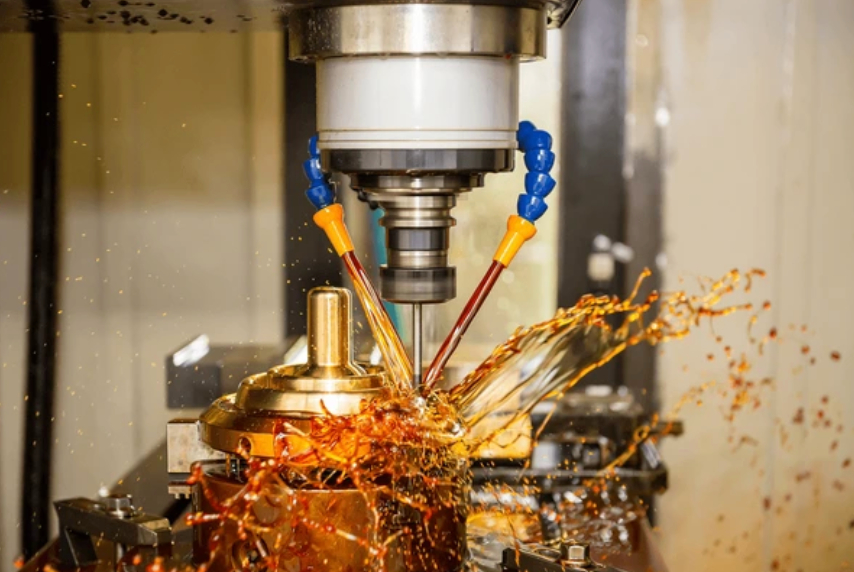Choice of Coolant (Lubricating-Cooling Fluid) and Its Impact on Performance

Choice of Coolant (Lubricating-Cooling Fluid) and Its Impact on Performance
Introduction: In the world of industrial machining and manufacturing, the choice of coolant is critical for the optimal performance of machines and tools. Coolants, also known as lubricating-cooling fluids (LCFs), play a significant role in reducing heat, friction, and wear during operations. This blog post will delve into the different types of coolants, their selection criteria, and the impact they have on machining performance, efficiency, and overall equipment longevity.
Types of Coolants:
-
Water-Soluble Coolants: These coolants are typically oil-based and contain water as the primary ingredient. Water-soluble coolants are widely used for their ability to remove heat efficiently. They are best for operations like drilling, milling, and turning.
- Advantages: High cooling efficiency, low cost, and good lubricating properties.
- Disadvantages: Prone to microbial growth and corrosion if not properly maintained.
-
Oil-Based Coolants: Oil-based coolants consist of mineral oils, synthetic oils, or semi-synthetic oils. These provide excellent lubrication and are effective in high-speed cutting operations.
- Advantages: Better lubrication, longer tool life.
- Disadvantages: Limited cooling capacity, higher cost, and environmental concerns.
-
Synthetic Coolants: These are chemical formulations without oil. They are designed to provide cooling, lubrication, and corrosion resistance.
- Advantages: Good for high-precision operations, better environmental profile.
- Disadvantages: Higher initial cost and may require more maintenance.
-
Semi-Synthetic Coolants: Combining oil and synthetic coolant properties, semi-synthetics offer a balance of cooling and lubrication.
- Advantages: Cost-effective, good performance across a range of operations.
- Disadvantages: Require more maintenance than pure synthetics.
Factors to Consider When Choosing Coolant:
-
Material Being Machined: The type of material (steel, aluminum, plastic, etc.) affects the choice of coolant. For example, aluminum requires a coolant with excellent corrosion resistance, while steel machining might prioritize lubrication properties.
-
Cutting Speed: High-speed machining generates more heat, necessitating coolants with superior cooling properties. Water-soluble coolants often outperform oil-based ones in these scenarios.
-
Tool Life: Coolants reduce friction between the tool and workpiece, extending tool life. Choosing the right coolant based on lubrication properties can make a significant difference in tool wear.
-
Environmental Impact: With increasing awareness of environmental concerns, selecting coolants with lower environmental impact has become crucial. Synthetics and water-soluble coolants are often preferred for their eco-friendliness.
-
Health and Safety: Some coolants may emit harmful fumes or cause skin irritation. It's important to consider the safety standards and potential health risks when choosing a coolant.
The Impact of Coolant on Performance:
-
Heat Management: The primary role of any coolant is to absorb and dissipate heat generated during machining. Inefficient cooling can lead to overheating, tool degradation, and even workpiece damage.
-
Surface Finish: A well-chosen coolant ensures smooth tool movement, which directly impacts the surface finish of the workpiece. Proper lubrication reduces the risk of surface defects and tool chatter.
-
Machine Longevity: A good coolant not only ensures the longevity of the tools but also helps maintain the machine's components by reducing friction, wear, and corrosion.
-
Operational Efficiency: Coolants can optimize machining speeds and feed rates, increasing overall productivity. Better cooling allows for higher cutting speeds without compromising quality or machine integrity.
Conclusion: Selecting the right coolant is essential to maximizing machining efficiency and tool life. By considering factors such as material, cutting speed, and environmental impact, manufacturers can ensure that their operations are cost-effective and environmentally friendly while achieving high-quality results. With so many coolant options available, taking the time to understand the characteristics and performance of each type will pay off in the long run.
